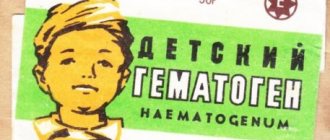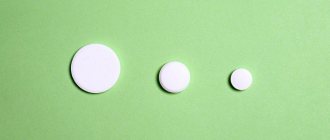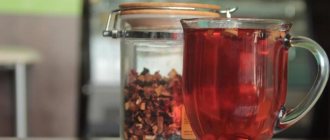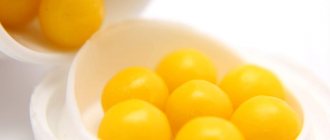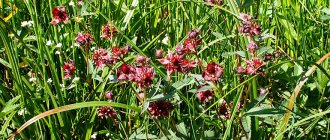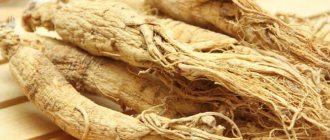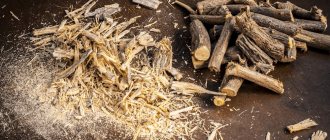The article was prepared by a specialist for informational purposes only. We urge you not to self-medicate. When the first symptoms appear, consult a doctor.
As is already known, dandelion is a healing plant and very useful. The therapeutic properties of dandelion have long been used for a large number of ailments and diseases. Dandelion appears in early spring and is one of a very small number of plants that are able to begin flowering in early spring and end in late autumn. A dandelion appears as soon as the snow melts from the soil, and immediately the free areas of snow begin to be covered with a dense, pleasing carpet of yellow dandelions.
In our latitudes, dandelion is more likely to be perceived as a weed from which one can weave a children's wreath. People don’t think much about the value of this amazing yellow flower that looks like a small sun. Meanwhile, in some European countries, Japan, India and the USA, dandelion is grown on special plantations and is subsequently used for medicinal purposes.
- Chemical composition
- In official medicine
What does a dandelion look like?
Dandelion officinalis or common dandelion is a herbaceous, perennial plant of the Asteraceae family, all parts of which contain a viscous milky sap. The taproot of a dandelion goes 20-60 cm into the ground. The leaves emerge from the rosette and can be either erect or parallel to the ground. The leaf blade is quite long, oblong in shape, with pinnately dissected edges.
In spring, a leaf rosette is the first to form, from the center of which from one to a dozen peduncles emerge. Dandelion shoots are dense, hollow inside, and crowned with a basket, which consists of more than 100 small tubular flowers. In each flower the petals are fused with the stamens.
In warm regions, dandelion blooms begin in late March or early April, in most areas - from mid-May. After flowering, in place of each small flower, an achene with a white fluffy tuft is formed.
Kinds
More than two thousand varieties of dandelions have been described, of which about 70 species receive special attention. They differ from each other in geographical distribution and some external characteristics. Let's look at the most common ones:
- The common dandelion is the most common type of plant, which is known to everyone since childhood; it abundantly covers the meadows and clearings of Belarus, Ukraine, Central Asia and most of Russia.
- White-tongued dandelion - got its name due to the tongue-shaped white flowers that surround the central yellow ones in the middle of the basket. The species is listed in the Red Book of Russia and is most often found on the Kola Peninsula.
- Dandelion is whitish - has pubescent leaves and yellow-white flowers. The species is widespread in the Kamchatka Territory, distinguished by its decorative qualities and unpretentiousness in cultivation.
- Autumn dandelion is distinguished by a less lush basket of inflorescences, which opens closer to autumn, and leaves divided into a larger number of feathers. The plant is widespread in the Crimea, the Balkans, and the countries of Southern Europe.
- Flat-leaved dandelion - during flowering it is similar to the common dandelion, differing in dark green, oblanceolate leaves on small petioles. The flat-leaved dandelion grows in Japan, China, Korea and the Primorsky Territory of Russia.
Dandelion officinalis
The precious medicine that grows under our feet and which we value little - it's all about the flower with parachutes, it's all about the dandelion. Dandelions are unassuming perennials that grow in unexpected places, along roads, on forest edges, in gardens and fields. There are more than 1000 species of dandelions. In practice, they are almost no different from each other. The differences are quite insignificant and boil down to the difference in the structure of the root and receptacle. Dandelions, like weeds, can grow in the most difficult and unpretentious conditions.
But not everywhere dandelions are treated only as a medicinal wild herb. In the USA, France and England, young dandelion leaves are actively used as food, adding them to salads. Flower caps are pickled, solyankas and soups are prepared from them, and jam is made. And the fact that roasted dandelion roots are used to make drinks is known not only in Western Europe. During the difficult years of war and famine, this vitamin drink was used to save people from illness in our area.
Recently, dandelion has been grown as a vegetable crop in many countries. New plant varieties have been developed in France. Cultivated dandelion species have an excellent taste without bitterness, thick, fleshy leaves with a delicate consistency. For the cultivation of dandelion plantations, special technologies have been developed that make it possible to collect good yields of the new medicinal and vegetable crop. Flower shoots are removed from plants, allowing the leaves to develop more intensively.
Benefits of dandelion
The healing qualities of dandelion have been known to mankind since ancient times. In folk medicine, it was added to remedies to normalize digestion, improve stomach functions, increase libido, and normalize blood sugar levels.
Official medicine confirms that different parts of dandelion are effective in complex therapy:
- Cough.
- Chronic constipation.
- Stagnation of bile.
- Helminthiasis.
- Reduced immune status.
- Nervous exhaustion.
Active substances concentrated in dandelion root have a healing effect on problems of gastric and intestinal digestion. Traditional pharmacology uses dandelion roots to produce drugs that lower cholesterol, normalize sleep, and restore the functions of the nervous system.
Diuretics are prepared from dandelion leaves. Juice prepared in a special way is prescribed to improve liver function, remove stones from the gallbladder, restore the body after serious illnesses, and extensive surgical interventions.
Dandelion roots crushed into powder are used externally. It is applied to superficial abrasions, deep wounds, burns, and bedsore areas. Powder from the roots of the plant is valued by patients with diabetes because of its ability to lower glucose levels.
Dandelion contains active substances that have a healing effect on the eyes and improve the quality of vision - lutein and zeaxanthin. Regular use of dandelion-based products helps cope with age-related vision loss and reduces the likelihood of developing cataracts.
Chemical composition
Fresh dandelion greens contain (per 100 g):
Calories 45 Kcal
- Fat:
0.7 g - Proteins:
2.7 g - Carbohydrates:
9.2 g - Water:
85.6 g - Ash:
1.8 g - Fiber:
3.5 g
| Vitamins | Quantity | % RDN |
| Vitamin K | 778.4 mcg | 648% |
| Lutein + zeaxanthin | 13610 mcg | 235% |
| Beta carotene | 5854 mcg | 117% |
| Vitamin A (retinol) | 508 mcg | 57% |
| Vitamin C (ascorbic acid) | 35 mg | 39% |
| Vitamin B2 (riboflavin) | 0.26 mg | 20% |
| Vitamin B1 (thiamine) | 0.19 mg | 16% |
| Vitamin B6 (pyridoxine) | 0.25 mg | 13% |
| Minerals (per 100 g): | Quantity | %RDN |
| Calcium, Ca | 187 mg | 19% |
| Copper, Cu | 0.171 mg | 19% |
| Iron, Fe | 3.1 mg | 17% |
| Manganese, Mn | 0.342 mg | 15% |
| Potassium, K | 397 mg | 9% |
Chemical analysis of dandelion revealed high levels of β-carotene, which is a powerful antioxidant. β-carotene prevents oxidation and cell destruction by free radicals. Recent biochemical studies have identified chicoric acid - CRA. The highest concentration of the substance was found in the leaves and stem of dandelion [1].
Dandelion flowers contain high levels of polyphenols. Their concentration fluctuates depending on sun exposure. In the autumn-winter period, dandelion has higher levels of methylsterols; in the summer, when sunny days are longer, an increase in sitosterol and cycloartenol esters is recorded.
Dandelion roots contain:
- Carbohydrates.
- Carotenoids.
- Fatty acid.
- Minerals.
- Sahara.
- Choline.
- Pectin.
- Mucous substances.
Inulin (25–30%) and fructooligosaccharides contained in dandelion roots have antimicrobial activity against pathogens of the gastrointestinal tract. Active substances suppress obesity, the development of malignant tumors and osteoporosis. Dandelion leaf extract is used as a flavor enhancer in drinks, in the treatment of heart disease, blood vessels, and obesity.
Dandelion components are non-toxic to the human body, therefore they can be used to realize anti-inflammatory, antioxidant, antirheumatic, and chloretic effects.
In addition to phytochemicals, dandelion inflorescences and leaves contain carotenoids, triterpene alcohols, vitamins C and B2, B6 and P, mineral salts of iron, calcium, phosphorus, manganese, copper, boron, nickel, titanium, molybdenum and some other elements.
Looking through the entire list of properties that dandelion has, it becomes clear how many useful substances this wild plant contains and how many of them are biologically active substances for the human body. People in ancient times did not yet have a scientific understanding of how rich this plant is in biochemical elements, but through their own tests and discoveries, people understood the beneficial effects of this plant on the body.
[Video] Dr. Berg - Dandelion is the healthiest weed in the world:
TOP 13 medicinal properties of dandelion
Many people complain that dandelion, like a weed, spreads incredibly quickly throughout the garden. We will help you reconsider your attitude towards this amazing plant. In herbal medicine and folk medicine, dandelion is especially valued for its medicinal effects.
- Contains a lot of nutrients. Dandelion contains vitamins, minerals, and fiber. Vitamins E, A, C, K, group B, and folic acid were found in the green parts of the plant. The leaves, raw and processed, are an excellent source of magnesium, calcium, potassium and iron.
Most of dandelion root is made up of soluble fiber. When entering the digestive tract, it maintains a healthy balance of intestinal microflora and stimulates the emergence of new immune cells. Tea is made from dry dandelion root.
- Has an antioxidant effect. The pronounced healing effect of dandelion is explained by the high concentration of the strongest antioxidant compounds. They represent a special type of molecules that have a neutralizing effect against free radicals and their destructive effects on living cells.
In a healthy body, free radicals are products formed during the metabolic process. If they are formed in too large quantities, they can provoke severe pathological processes and premature aging.
Dandelion antioxidants provide the body with beta-carotene, which protects cells from the damaging effects of oxidative stress [2]. Dandelion polyphenols concentrated in flowers have similar properties. They are present in small quantities in the green parts of the plant and the root.
- Relieves symptoms of inflammation. Plant polyphenols have an anti-inflammatory effect. The body naturally responds to illness or injury with inflammation. An uncontrolled chronic inflammatory response leads to damage to cellular DNA and internal tissues.
Laboratory studies have shown that treating inflammatory lesions with dandelion extract helps reduce the level of pro-inflammatory markers [3], [4].
In one experiment, an inflammatory process in the lungs was artificially induced in mice. Next, the experimental group was given dandelion. It turned out that, unlike the control group, in animals of this group the signs of pneumonia decreased faster and more effectively [5].
Currently, special studies are being initiated to study the anti-inflammatory properties of dandelion in humans.
- Helps control blood glucose levels. Chicorine and chlorogenic phytoacids, which are found in all parts of the dandelion, have hypoglycemic properties.
Observations of animals in the laboratory have proven that dandelion stimulates the production of insulin by pancreatic cells. Simultaneously with this process, more active absorption of glucose by muscle fibers is observed.
The combined effect of the active acids of dandelion is expressed in increasing sensitivity to insulin and normalizing blood sugar levels [6].
The administration of chicoric and chlorogenic acids to animals slowed down the absorption of starchy carbohydrates. The observed effect confirmed the property of dandelion to influence blood sugar levels.
- Reduces cholesterol levels. A study of the composition of dandelion led to the conclusion that some of its components can affect cholesterol levels and reduce the likelihood of heart and vascular diseases.
In the laboratory, a group of mice were given dandelion extract. The analysis showed that the animals' levels of total cholesterol and triglycerides quickly decreased [7].
A similar experiment was carried out with rabbits. The animals were given leaves and dandelion root to their cholesterol-rich food. Control measurements showed a significant drop in blood cholesterol [8].
- Lowers blood pressure. People who trust traditional medicine are convinced that dandelion is effective for hypertension - it lowers blood pressure. Official medicine has not yet confirmed this effect.
Herbalists introduce dandelion into diuretic formulations. This is due to its ability to remove toxins. It is known that diuretics are traditionally included in the complex treatment of hypertension. Removing excess fluid leads to a decrease in blood pressure.
A small study was conducted on a small group of people - 17 people. Within a short time they received dandelion extract. In this small sample, its diuretic effect was confirmed [9].
Dandelion has an indirect effect on blood pressure levels due to its potassium content. As you know, potassium is directly related to low blood pressure in humans. The hypotensive effect of potassium extends not only to the consumption of dandelion, but also to other foods rich in it.
- Improves your health liver. Experiments with animals have proven that active phytocompounds in dandelion protect liver cells from stress and dangerous toxins. Thus, observations of mice showed that after high dosages of paracetamol, signs of toxic liver damage appear. In individuals receiving dandelion, such manifestations were not observed. Scientists linked the findings to the antioxidants that the plant contains [10].
Several scientific observations of animals have led to the conclusion that dandelion extract reduces the amount of fat that is deposited in the liver. Plant compounds also protect hepatocytes from the effects of oxidative stress [11].
It is too early to draw such conclusions regarding people, since human metabolism has its own characteristics. Additional studies are planned to study the hepatoprotective properties of dandelion.
- Helps lose weight. Preliminary evidence suggests that dandelion may help with weight loss and maintenance. When taking dandelion extract, carbohydrate metabolism is normalized and fat absorption is improved. As a result, weight loss is observed [12].
Experiments with mice confirm that introducing dandelion into the diet causes a decrease in body weight. The effect was discovered by chance, so confirmation requires a specialized, focused study.
An independent study on verified obese mice confirmed that dandelion's fat-burning effect is due to chlorogenic acid. Its action affects the level of hormones that affect fat metabolism [13].
- Has an antitumor effect. The information that dandelion prevents cancerous changes in cells intrigued both doctors and patients. Medicine is constantly looking for ways to inhibit the growth of malignant tumors in various organs.
A laboratory experiment confirmed that the introduction of dandelion leaf extract reduces the activity and growth of altered abnormal cells. It is noteworthy that similar effectiveness has not been established for extracts from dandelion roots and flowers [14].
A test-tube study conducted by other scientists showed different results. Dandelion root extract slowed the development of malignant cells in the liver, colon walls, and pancreas [15], [16], [17].
Of course, the data obtained are somewhat contradictory, so additional research is required to study in detail the antitumor properties of dandelion and the possibility of its use for medicinal and prophylactic purposes.
- Improves the functioning of the digestive system, relieves constipation. In official medicine, dandelion preparations have long been successfully used to relieve constipation and indigestion. To confirm this effect, studies were conducted on both animals and humans.
An animal experiment showed that after the administration of dandelion extract, the contractile function of the stomach increases significantly. This activity facilitates the movement of gastric contents into the small intestine [18].
Researchers have found that dandelion root contains a lot of the prebiotic fiber inulin. Inulin has a normalizing effect on constipation and stimulates intestinal motility [19].
- Activates the body's defenses.
It has been established that dandelion has antiviral and antibacterial activity, which means it can support the body in the fight against infections. Laboratory tests have confirmed that the use of dandelion extract blocks the ability of viruses to replicate [20], [21].
Experiments with bacteria showed similar activity. This means that the active compounds in dandelion can protect against pathogenic bacterial pathogens [22], [23].
- Helps improve skin condition.
Experimental observations of animals in the laboratory have shown that the active components of dandelion protect the skin from age-related changes, the destructive effects of solar ultraviolet radiation and rashes.
In one study, extracts of dandelion leaves and flowers were applied to the skin before and immediately after exposure to ultraviolet B rays. The skin remained intact. The active substances of the root do not have a similar effect [24].
With age, human skin loses its ability to regenerate and produce new healthy cells. One experiment confirmed the ability of dandelion root extract to slow down skin aging and stimulate the formation of healthy young cells [25].
It has been experimentally confirmed that dandelion extract softens skin inflammation, eliminates irritation, stimulates collagen synthesis and maintains hydration. This means that dandelion-based products may help prevent and treat certain types of acne [26].
- Maintains healthy bone tissue. There is not yet enough data on the effects of dandelion on human bones. Preliminary results from studies of its composition indicate that some of its active compounds may support bone density and skeletal health.
For example, the green parts of the dandelion contain a lot of calcium and vitamin K, which can support bone mineralization.
Inulin fiber stimulates digestion, which means it helps the functioning of intestinal receptors that absorb minerals and vitamin D.
[Video] Frolov Yu. A. - medicinal properties, preparation and recipes from dandelion:
What are the benefits of dandelion root?
Today, dandelion is used to treat skin diseases, inflammation of the lymphatic system, anemia, and improve the functions of the gastrointestinal tract and liver. It affects the entire spectrum of metabolism, nutrition, assimilation, purification and excretion. The plant's action is especially focused on the liver, digestive system and kidneys.
Dandelion contains:
- various amino acids necessary for the body;
- sugar (for example, inulin - helps strengthen the immune system and normalize blood sugar levels);
- minerals such as iron, zinc, boron, calcium, silicon;
- vitamins A, B, C, K and E.
You can eat all parts of the dandelion - flowers, stems, leaves and roots. It is the root that contains the most active ingredients during flowering. In addition, the roots include many useful and valuable substances that have a general strengthening effect on the body: up to 15% protein, inulin, 10% taraxacin glycoside, unsaturated acids.
Dandelion root lowers cholesterol levels. This happens due to choline (also acts as a liver cleanser). Another important element, sterol, removes unnecessary fluid from the body (including bile) and reduces the risk of heart attack.
Thanks to triterpene acids, the plant root is known for its antimicrobial and anti-inflammatory effects.
Uses of dandelion
Dandelion is used in traditional and folk medicine around the world. In addition, it is widely used in cooking and winemaking. Scientific works and research works are devoted to dandelion. Herbalists and botanists characterize it as a miracle cure and an essential part of the diet.
In official medicine
Available in the pharmacy network:
- Dandelion roots (Radix Taraxacum) - in packs of 100 g.
- Dandelion extract (Taraxacum Extractum spissum).
- Dandelion extract in capsules.
For the treatment of joints and restoration of cartilage tissue, the dietary supplement Anavita+ is traditionally prescribed. The effectiveness of the drug is confirmed by hardware studies.
In folk medicine
In folk medicine, dandelion leaves and roots were used as an appetite stimulant, diuretic and expectorant, as well as for stomach catarrh. To eat dandelion, you need to take only the roots and leaves of a young plant. Dandelion officinalis can help in the treatment of liver diseases, kidney stones and gall bladder, and is also a good helper for atherosclerosis and inflammatory kidney diseases.
Dandelion can also be used as a medicine for intoxication, poisoning, cholecystitis, liver cirrhosis, edema of various origins, low potassium levels, gastritis with low acidity, poor appetite, joint diseases, etc. Thanks to the healing substances contained in dandelion, this plant can be used to treat atherosclerosis, diabetes, and also as a diuretic for kidney stones and cholelithiasis, as an adjuvant in the treatment of anemia and anemia. Dandelion is also an excellent wound healing agent and can be used in the treatment of paresis, paralysis, and as an anthelmintic medicine.
Dandelion has another very good property - antitoxic, this plant can stimulate the cardiovascular system, it can be used as an anti-radiation agent, and it is extremely useful in the treatment of arthritis and as a drug that helps remove warts.
Dandelion is used to treat skin diseases, to neutralize the bites of poisonous insects, and the plant also helps nursing mothers very well with a lack of milk. The properties of dandelion are so diverse that they make this plant healing, capable of stimulating performance, eliminating increased fatigue and tiredness.
A decoction of dandelion roots is prescribed for liver diseases, to get rid of edema due to renal failure. The drug is effective for mild diabetes mellitus and liver intoxication as a result of antibacterial therapy. To prepare the decoction, fresh dandelion root is crushed. Approximately 15 g of raw material is poured into 500 ml of water and boiled over low heat for 10-15 minutes. The finished broth is infused for two hours. The product is taken 3-4 times a day, 150 ml. The product does not have a toxic effect, so it can be used for a long time. You can add herbs to the decoction that enhance the body’s antiviral resistance, stimulate appetite and immunity.
A mixture of dandelion roots is a remedy that is effective in the complex treatment of gout, inflammatory skin diseases, and skin pigmentation disorders. The medicinal composition is also prescribed to cleanse the blood. For the mixture, dandelion roots are finely chopped or passed through a meat grinder, and the juice is filtered. Take 100 g of the resulting liquid, add 15 ml of alcohol, glycerin and water. All ingredients are mixed and filtered. Drink 1 or 2 tablespoons of the mixture per day.
An infusion of dandelion leaves is an ideal remedy for improving appetite. His recipe is very simple - add two tablespoons of chopped dandelion leaves to 500 ml of boiling water and stir. The infusion is kept for 12 hours, taken 30 minutes before meals, 3-4 times a day.
Dandelion root infusion . Used to treat eczema. To prepare the medicine, take equal parts of dandelion and burdock roots and fill them with cold water. The composition is infused for 12 hours, then boiled and left to brew for 2-3 hours. Drink 1/2 glass three times a day.
Dandelion root salad - recommended for thyroid diseases, potency disorders in men, decreased fertility in women. Fresh roots of the plant are soaked overnight in cold water. In the morning, they are crushed, soy sauce and favorite spices are added. You can add fresh cucumber and grated carrots.
Dandelion leaf salad is prepared for the treatment of hepatitis in equal parts with lettuce. You can fill it with vegetable oil.
Dandelion has juice that can be classified as one of the most healing, tonic and strengthening agents. Medicinal dandelion juice can be considered a necessary means of neutralizing excess acidity and normalizing the alkaline composition of the body. For diseases of the spine, bones, to increase the strength of teeth, to fight periodontal disease, etc., fresh dandelion juice, which was obtained from the roots and leaves of the plant mixed with the juice of carrots and turnip leaves, helps well.
Dandelion flower juice is effective for rheumatism. The flowers are ground with sugar in a 1:1 ratio. The resulting mixture is infused for 7 days, then the resulting juice is squeezed out. Take 1 teaspoon before meals. Store the drink in the refrigerator.
To lower cholesterol, use an infusion of dandelion roots. To prepare the product, take a medium-sized dandelion root and infuse it in water. For one spine, 250 ml is enough. After three days, the infusion is ready; it is taken several times a day in small doses. The maximum permissible daily volume is 400 ml of infusion.
Dandelion-based products can be used externally. For example, a special decoction is prepared to lighten freckles. About 30 g of finely chopped roots are poured into 300 ml of hot water and boiled over low heat for 15-20 minutes. Allow the broth to cool to a pleasant temperature and wash your face in the morning and evening.
To improve your vision you will need:
- 3 parts dandelion roots.
- 2 parts onion.
- 4 parts honey.
Juice from dandelion roots and onions is mixed with honey. The product is infused in a dark place for 4-5 hours. Cotton pads are moistened in the prepared composition and applied to the eyelids. Regular lotions help improve vision and prevent cataracts.
For cellulite , rub an infusion of equal parts of dandelion greens and nettle into problem areas.
To treat herpes, boil crushed dandelion roots in 200 ml of water for 5 minutes. The finished product is divided into equal parts and taken before meals.
To get rid of dermatitis , dandelion leaves are soaked in hot water and applied like a poultice to the affected skin. The procedure is repeated several times throughout the day.
Best Dandelion Root Supplements on iHerb
Dandelions are very bitter, which is why many people don't like their taste. All the benefits from the plant can be obtained with the help of dietary supplements in an easy-to-use capsule form. Our editors have selected for you the best dandelion root extract preparations on the popular iHerb website.
Now Foods Vegetarian Capsules
The drug contains 100 capsules with a dosage of 500 mg of active substance each, and due to the high concentration, the manufacturer recommends limiting consumption to one capsule per day. It is recommended that you consult your doctor about using the capsules during pregnancy or when taking other medications.
Dandelion Root Now Foods on iHerb
Nature's Way dandelion roots in capsules
Each package contains 100 or 180 vegetarian capsules, each containing 525 mg of dandelion root. It is recommended to take 3 capsules once a day. Before using the supplement, do not forget to consult your doctor!
Nature's Way in capsules
Chopped root for decoction from Frontier Natural Products
The product from Frontier Natural Products is consumed as a tea. To prepare the drink, pour 2 teaspoons of the dried root with one glass of boiled water, and then leave for 3-5 minutes under the lid.
Natural Dandelion Root for Tea
How to make juice from dandelions?
Drinking dandelion juice has a healing effect in case of cholecystitis, restores liver function, normalizes bile production, and successfully treats furunculosis and eczema. To enhance the beneficial properties of dandelion, the finished juice can be mixed with carrot juice.
You can make dandelion juice in different ways:
- Recipe No. 1 - dandelion is dug up along with its roots from May to June. The plant is washed thoroughly, kept in salt water for half an hour, and dried with a towel. The dandelion is ground through a meat grinder, and the juice is squeezed out of the resulting mass. The juice is mixed with sugar in equal parts, 1/10 of vodka is added. The drink is aged for 14 days, after which it is ready to drink.
- Recipe No. 2 - do everything as in the previous recipe, but do not add vodka and sugar. Squeezed dandelion juice is diluted with a small volume of water. Drink 60-70 ml of the drink along with honey before meals.
- Recipe No. 3 - only fresh dandelion leaves are used for preparation. The herbal raw materials are blanched for a minute, and the water is drained. The prepared leaves are crushed through a meat grinder and filtered through two layers of gauze. The finished juice is diluted with water in equal parts and boiled for a couple of minutes.
Dandelion juice
Dandelion: medicinal properties and contraindications. To obtain juice, take all parts of the dandelion except the roots. All cut greens are first washed well and then soaked in a salt solution (1 liter of water: 2 tablespoons of salt) for an hour. Next, place the dandelion greens in a colander, rinse and scald with boiling water, and allow the water to drain. The entire prepared mass is twisted in a meat grinder, the resulting pulp is squeezed through gauze. Combine with alcohol in a 1:1 ratio.
How to use
The roots, stems and leaves of dandelions are used for problems with the gallbladder, for the prevention of liver diseases, for the treatment of jaundice, hemorrhoids, gastritis, and constipation. Dandelion infusion is used for atherosclerosis and anemia; it produces a tonic and stimulating effect. The juice squeezed from the young leaves of the plant is recommended to be taken fresh in the spring. Tincture of dandelion roots treats boils, acne, and skin rashes. The white juice of the plant burns warts and calluses.
Contraindications
Do not use products containing dandelion components if they are individually intolerant, during exacerbations of gastrointestinal diseases, or gallstone disease. Dandelions should not be given to children under 7 years of age or to nursing mothers.
How to make honey from dandelions?
To make healing honey, collect 400 dandelion flowers. Carefully and carefully separate all the yellow petals from the green receptacle. You can use scissors for this.
Pour the resulting yellow mass into a saucepan and add 400 ml of water. Stir the contents of the pan and place on low heat. After boiling, simmer for 10 minutes. After this, remove the pan from the stove and let it cool completely.
After about 2-3 hours, strain the boiled dandelions through a sieve. Squeeze out the flower mass by hand. Pour the resulting liquid into a saucepan. After boiling, pour 1 kg of sugar into the pan. Mix the contents thoroughly and cook for 25 minutes. Carefully remove the foam that forms during cooking with a spoon. Pour in the juice of 1/2 lemon, stir again. Remove the lid from the pan and simmer until desired thickness is achieved, 10-15 minutes. After this, remove the pan from the heat and allow the honey to cool. Ready dandelion honey is poured into clean jars.
[Video] Dandelion honey, step-by-step recipe:
Reviews
Feodor, 35 years old, Klin
I would like to warn the curious from drinking unlimited amounts of coffee made from roasted dandelion roots. Once at the dacha, having heard a lot of advice about vitamin-rich dandelion coffee, I fried dandelion roots dug up in my own yard in a dry frying pan. The smell and taste of the coffee was almost like the real thing. But after a while I realized that I was becoming drunk, although my coordination was not impaired at all. But the headaches were severe. It is impossible not to know the limits in anything!
Boris, 52 years old, Pskov
I will say that thanks to dandelions you can increase male strength, this is not very far from the truth. First of all, after drinking dandelion tea, your well-being and mood improve, and it’s not far from improving your potency.
Alisa, 46 years old, Yaroslavl
Freshly ground dandelion leaves and pipes make good whitening face masks. Dandelion pulp should be mixed with sour milk and left for 15-20 minutes on areas where there is skin pigmentation. After 3-4 such procedures, the result will become noticeable. Skin color will even out.
Dandelions in spring and autumn become not just beautiful flowers, but a cure for many diseases. The main requirement is that in order for this medicine not to turn into poison, the places from which the flowers will be picked must be free of human waste. Therefore, it is important that a person always remembers that it is necessary to take into account not only his own desires and needs, but also nature.
Health to you and your loved ones! Natalya Belokopytova.
Dandelion Tea: 7 Health Benefits
Tea is prepared from dandelion leaves or its fried roots. The main condition is to use dandelion grown without the use of herbicides or pesticides.
Regardless of the choice of raw materials, the drink will exhibit medicinal properties:
- Eliminates swelling.
- Heals the liver.
- Tones.
- Helps reduce weight.
- Soothes indigestion.
- Fights cancer.
- Relieves urinary tract infections.
To make dandelion tea, wash the dandelion flowers and leaves and pour boiling water over them. After 20 minutes the drink can be drunk. If you want to use dandelion roots, you should first wash them and finely chop them. The prepared roots are dried in the oven over low heat for 2 hours. To prepare tea, 1-2 tablespoons of dry dandelion roots are steamed with boiling water and left for 5-10 minutes.
[Video] How to properly prepare flowers and brew tea: recipe, proportions:
Decoction of leaves
Decoctions from this part of the plant are most effective in treating:
- skin;
- hair loss;
- dandruff;
- freckles;
- warts;
- joints;
- calluses.
Before use, rinse the collected leaves under running water and cut them (fresh leaves can be torn).
- Take 2 tbsp. l. fresh leaves or 1 tbsp. l. dry. Pour in 0.5 liters of water. Boil. Let it brew for 2 hours. Strain and use warm.
- Pour a glass of fresh leaves into 1 liter of boiling water. Simmer for 10-15 minutes. Leave covered until cool, strain and use as compresses.
- Use 100-200 grams of fresh finely chopped leaves. Pour 0.5 liters of water over them and bring to a boil. Strain the resulting concentrated mixture, cool and use for its intended purpose.
The resulting infusions, depending on the area of damage, can be increased or decreased in volume, calculating the ingredients proportionally. After preparation, use as baths, lotions, compresses, masks.
With regular use, the decoction will help maintain health for a long time.
Dosage forms
Given the fact that research into the safety and medicinal effectiveness of dandelion continues, doctors have established recommendations regarding possible dosages.
Each plant form has its own standards: [11]
- Fresh leaves - from 4 to 10 g per day.
- Dried leaves - from 4 to 10 g per day.
- Tincture - from 2 to 5 ml, three times a day.
- Juice from fresh leaves - 5 ml, twice a day.
- Extract - from 5 to 10 ml per day.
- Fresh roots - from 2 to 8 g per day.
- Dry powder - from 250 to 1000 mg, up to four times a day.
Procurement of raw materials
Inflorescences and leaves are harvested during flowering, when the maximum amount of useful substances is concentrated in the upper part of the plant. It is better to collect roots in early spring or autumn.
The best time to collect is in the morning. The collected plants are laid out on newspapers and other paper in a thin layer and dried for 10 days, turning over from time to time.
To remove the roots from the ground, carefully pry them up with a shovel. Next, they are washed with cold water, finely chopped and dried naturally, or in dryers at a temperature of about 50 C. A well-dried root should break with a characteristic crack.
The finished raw materials are placed in glass jars, paper bags and cardboard boxes. Aboveground shoots are stored for 2 years, roots - up to 5 years.
© Ilya Vladimirovich | 2017-05-23 That same gardener
Side effects
Dandelion, collected from a favorable, clean region, is a safe, non-toxic plant. It does not pose a threat if eaten fresh or processed.
Considering that dandelion contains a lot of active substances, we can assume the risk of allergic reactions. This is especially likely for people who are allergic to any plants, such as ragweed. In case of sensitive skin, contact with dandelion may cause dermatitis [27].
Dandelion-based products are not compatible with certain medications:
- Antacids lose their properties, as dandelion activates the production of stomach acids.
- Anticoagulants combined with dandelion increase the risk of bleeding.
- Diuretics can cause electrolyte imbalances.
- Lithium drugs, which are used in psychiatry, are weakened by dandelion.
- Ciprofloxacin is not absorbed by consuming dandelion.
- Hypoglycemic drugs together with dandelion can lead to a significant drop in sugar, even to the point of coma.
Treatment with dandelion begins with minimal dosages, which are gradually increased. If negative symptoms appear, stop using herbal remedies.
Best before date
24 months
Vitamins with similar effects
- Betulanorm (Capsule)
- For the genitourinary system Life formula (Capsule)
- Coffeeberry (Capsule)
- Sana-Sol - Vitamin C (Oral tablets)
- Pancreavit (Capsule)
- St. John's wort (Oral tablets)
The description of vitamin Dandelion P is intended for informational purposes only. Before starting to use any drug, it is recommended to consult a doctor and read the instructions for use. For more complete information, please refer to the manufacturer's instructions. Do not self-medicate; EUROLAB is not responsible for the consequences caused by the use of information posted on the portal. Any information on the project does not replace consultation with a specialist and cannot be a guarantee of the positive effect of the drug you use. The opinions of EUROLAB portal users may not coincide with the opinions of the site Administration.
Are you interested in Vitamin Dandelion P? Do you want to know more detailed information or do you need a doctor's examination? Or do you need an inspection? You can make an appointment with a doctor - the Euro lab is always at your service! The best doctors will examine you, advise you, provide the necessary assistance and make a diagnosis. You can also call a doctor at home . Euro lab clinic is open for you around the clock.
Attention! The information presented in the vitamins and dietary supplements section is intended for informational purposes and should not be a basis for self-medication. Some of the drugs have a number of contraindications. Patients need to consult a specialist!
If you are interested in any other vitamins, vitamin-mineral complexes or dietary supplements, their descriptions and instructions for use, their analogues, information about the composition and form of release, indications for use and side effects, methods of use, dosages and contraindications, notes about the prescription of the drug for children, newborns and pregnant women, price and consumer reviews, or you have any other questions and suggestions - write to us, we will definitely try to help you.
Contraindications to the use of dandelion
It is not recommended to use dandelion for people who have an acute condition with blockage of the bile ducts. It is also necessary to be careful when taking dandelion for people who have increased secretion of hydrochloric acid, or, more simply, with peptic ulcers and gastritis. An overdose of dandelion can cause severe vomiting and diarrhea.
Author of the article:
Sokolova Nina Vladimirovna |
Herbalist Education: Diploma in General Medicine and Therapy received from the University named after N.I. Pirogov (2005 and 2006). Advanced training at the Department of Herbal Medicine at the Moscow People's Friendship University (2008). Our authors
The main contraindications and harm of dandelion root to the body
Dandelion has low toxicity and is safe for most people. But there are also exceptions. Thus, the herbal remedy is strictly contraindicated for:
- exacerbation of cholelithiasis;
- blockage of the biliary tract;
- intestinal disorder;
- increased acidity;
- peptic ulcer of the gastrointestinal tract.
Important!
An overdose of the drug from pustudoy can cause diarrhea. Pregnant women and children under 5 years of age should take this product with caution.
In people with particularly sensitive skin, kulbaba juice can cause contact dermatitis. People with allergies, particularly to ragweed, could potentially experience a reaction after eating dandelion. This plant extract may interact with certain medications (especially diuretics, antibiotics, blood thinners, and diabetes medications) to cause unwanted reactions.
You may be interested in:
Parsley root: benefits and harms, medicinal use Parsley is usually used in cooking as a spice and a vitamin supplement for various dishes. In addition to the green part...Read more...
